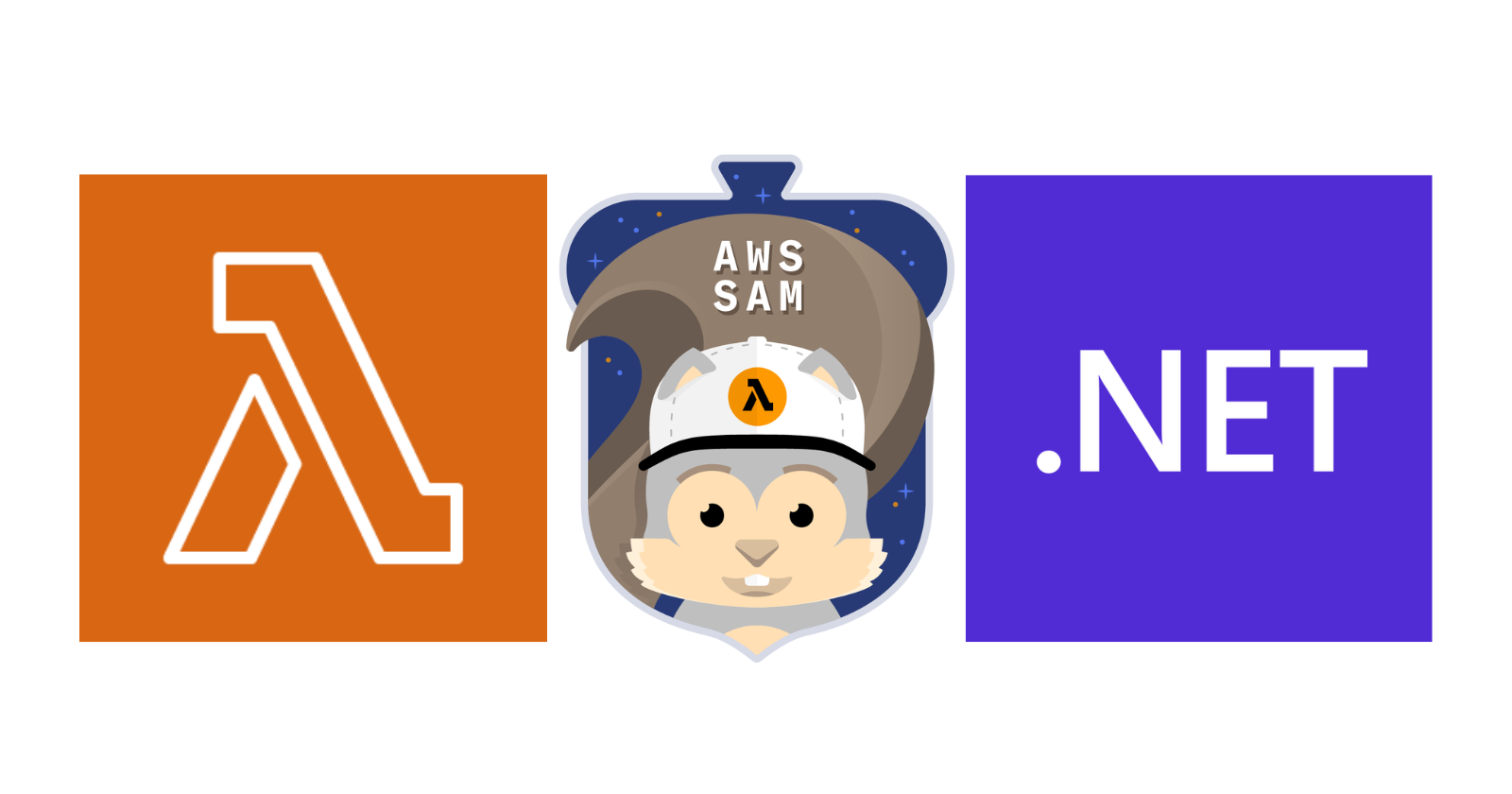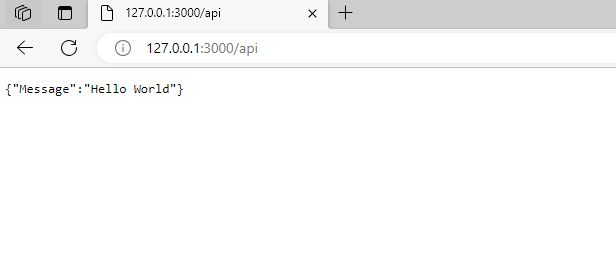Testing AWS Lambda Functions Locally Using SAM
 Raul Naupari
Raul Naupari
Testing AWS Lambda functions locally can be a crucial step in the development process, as it allows developers to identify and resolve issues before deploying their code to the cloud. In this regard, AWS SAM provides a method for testing our API called sam local, which enables us to perform tasks such as:
Run AWS Lambda functions locally.
Test API Gateway endpoints.
Simulate event triggers from services like S3, SNS, and SQS.
And even debug AWS Lambda functions.
All this works using Docker containers to replicate the AWS runtime environment on your local machine. When we issue a sam local command, SAM reads your template file, pulls the appropriate Docker image for the specified Lambda runtime, then packages our code, dependencies, and environment variables into a Docker container, simulating the actual AWS Lambda environment as closely as possible.
Pre-requisites
Ensure you have an IAM User with programmatic access.
Install the Amazon Lambda Templates with this command:
dotnet new -i Amazon.Lambda.TemplatesInstall the Amazon Lambda Tools with this command:
dotnet tool install -gAmazon.Lambda.ToolsInstall the AWS SAM CLI.
Ensure that Docker Desktop is up and running.
The Lambda Function
Run the following commands to create the project that will host our Lambda functions:
dotnet new lambda.EmptyFunction -n MyLambdaFunctions -o .
dotnet add src/MyLambdaFunctions package Amazon.Lambda.APIGatewayEvents
dotnet add src/MyLambdaFunctions package Amazon.Lambda.SQSEvents
dotnet new sln -n SamLocal
dotnet sln add --in-root src/MyLambdaFunctions
Open the solution, navigate to the MyLambdaFunctions project, and update the Function.cs file as follows:
using Amazon.Lambda.APIGatewayEvents;
using Amazon.Lambda.Core;
using Amazon.Lambda.SQSEvents;
[assembly: LambdaSerializer(typeof(Amazon.Lambda.Serialization.SystemTextJson.DefaultLambdaJsonSerializer))]
namespace MyLambdaFunctions;
public class Function
{
public string FunctionHandler(string input, ILambdaContext context)
{
context.Logger.LogInformation($"new message: {input}");
return "Hello world";
}
public APIGatewayHttpApiV2ProxyResponse ApiFunctionHandler(APIGatewayHttpApiV2ProxyRequest input, ILambdaContext context)
{
context.Logger.LogInformation($"new message: {input.Body}");
return new APIGatewayHttpApiV2ProxyResponse
{
Body = @"{""Message"":""Hello World""}",
StatusCode = 200,
Headers = new Dictionary<string, string> { { "Content-Type", "application/json" } }
};
}
public void MessageFunctionHandler(SQSEvent evnt, ILambdaContext context)
{
foreach (var record in evnt.Records)
{
context.Logger.LogInformation($"new message: {record.Body}");
}
}
}
We are defining three Lambda functions, two of which have a request and a message as triggers. Create a template.yml file with the following content:
AWSTemplateFormatVersion: '2010-09-09'
Transform: AWS::Serverless-2016-10-31
Description: >
SAM Local
Resources:
MyFunction:
Type: AWS::Serverless::Function
Properties:
Timeout: 60
MemorySize: 512
Tracing: Active
Runtime: dotnet6
Architectures:
- x86_64
Handler: MyLambdaFunctions::MyLambdaFunctions.Function::FunctionHandler
CodeUri: ./src/MyLambdaFunctions/
MyApiFunction:
Type: AWS::Serverless::Function
Properties:
Timeout: 60
MemorySize: 512
Tracing: Active
Runtime: dotnet6
Architectures:
- x86_64
Handler: MyLambdaFunctions::MyLambdaFunctions.Function::ApiFunctionHandler
CodeUri: ./src/MyLambdaFunctions/
Events:
ListPosts:
Type: Api
Properties:
Path: /api
Method: get
MyMessageFunction:
Type: AWS::Serverless::Function
Properties:
Runtime: dotnet6
Handler: MyLambdaFunctions::MyLambdaFunctions.Function::MessageFunctionHandler
CodeUri: ./src/MyLambdaFunctions/
Policies:
- SQSPollerPolicy:
QueueName: !GetAtt SQSQueue.QueueName
Events:
SQSEvent:
Type: SQS
Properties:
Queue: !GetAtt SQSQueue.Arn
BatchSize: 10
SQSQueue:
Type: AWS::SQS::Queue
Properties:
QueueName: "mySQSQueue"
Run sam build to build the resources declared in the template. This must be done every time changes are made.
Invoke a Lambda Function Locally
The standard syntax of the command is:
sam local invoke <functionlogicalid> --event <file>
Create a folder named events and create a file called myfunction.txt with the following content:
"My lambda function input"
Run sam local invoke MyFunction --event .\events\myfunction.txt to see the following output:
START RequestId: a996bd93-68f1-4011-867d-9646ec188542 Version: $LATEST
2023-08-21T00:52:01.317Z a996bd93-68f1-4011-867d-9646ec188542 info new message: My lambda function input
END RequestId: a996bd93-68f1-4011-867d-9646ec188542
REPORT RequestId: a996bd93-68f1-4011-867d-9646ec188542 Init Duration: 0.09 ms Duration: 195.77 ms Billed Duration: 196 ms Memory Size: 512 MB Max Memory Used: 512 MB
"Hello world"
Generate an Event to Invoke a Lambda Function
We can use sam local generate-event command to generate events for supported AWS services. We can run sam local generate-event to display the list of supported AWS services. The standard syntax of the command is:
sam local generate-event <service> <event>
For example, by running the command sam local generate-event apigateway -h, we can see all the events available for the API Gateway service:
Options:
-h, --help Show this message and exit.
Commands:
authorizer Generates an Amazon API Gateway Authorizer Event
aws-proxy Generates an Amazon API Gateway AWS Proxy Event
http-api-proxy Generates an Amazon API Gateway Http API Event
request-authorizer Generates an Amazon API Gateway Request Authorizer Event
And, by running sam local generate-event apigateway http-api-proxy -h, we can see different sections of the event that can be modified:
Options:
--body TEXT Specify the body name you'd like, otherwise the default
= {"test":"body"}
--stage TEXT Specify the stage name you'd like, otherwise the default
= $default
...
Run sam local generate-event apigateway http-api-proxy > .\events\myapifunction.json and ensure the generated file is in UTF-8 encoding. Now, run sam local invoke MyApiFunction --event .\events\myapifunction.json to see the following output:
START RequestId: 40b6d72f-6c3d-4e05-ac1c-9f8d94a5662c Version: $LATEST
2023-08-21T01:19:15.296Z 40b6d72f-6c3d-4e05-ac1c-9f8d94a5662c info new message: eyJ0ZXN0IjoiYm9keSJ9
END RequestId: 40b6d72f-6c3d-4e05-ac1c-9f8d94a5662c
REPORT RequestId: 40b6d72f-6c3d-4e05-ac1c-9f8d94a5662c Init Duration: 0.19 ms Duration: 248.69 ms Billed Duration: 249 ms Memory Size: 512 MB Max Memory Used: 512 MB
{"statusCode":200,"headers":{"Content-Type":"application/json"},"body":"{{\"Message\":\"Hello World\"}}","isBase64Encoded":false}
The same exercise can be performed for our third Lambda function, run sam local generate-event sqs receive-message --body "Hi" > .\events\mymessagefunction.json and then sam local invoke MyMessageFunction --event .\events\mymessagefunction.json:
Mounting C:\Source\sam-local\.aws-sam\build\MyMessageFunction as /var/task:ro,delegated inside runtime container
START RequestId: ab673232-20c0-407d-8412-c49213b48566 Version: $LATEST
2023-08-21T01:26:22.898Z ab673232-20c0-407d-8412-c49213b48566 info new message: Hi
END RequestId: ab673232-20c0-407d-8412-c49213b48566
REPORT RequestId: ab673232-20c0-407d-8412-c49213b48566 Init Duration: 0.26 ms Duration: 187.51 ms Billed Duration: 188 ms Memory Size: 128 MB Max Memory Used: 128 MB
Starting a Local API Gateway
The standard syntax of the command is:
sam local start-api <options>
One of the most useful options is --warm-containers:
eager: Containers for all functions are loaded at startup and persist between invocations.
lazy: Containers are only loaded when each function is first invoked and persisted for additional invocations.
Without this option, the command will create a new container each time our function is invoked. Run sam local start-api --warm-containers lazy and invoke the Lambda function through the browser:

All the code is available here. Thanks, and happy coding.
Subscribe to my newsletter
Read articles from Raul Naupari directly inside your inbox. Subscribe to the newsletter, and don't miss out.
Written by

Raul Naupari
Raul Naupari
Somebody who likes to code